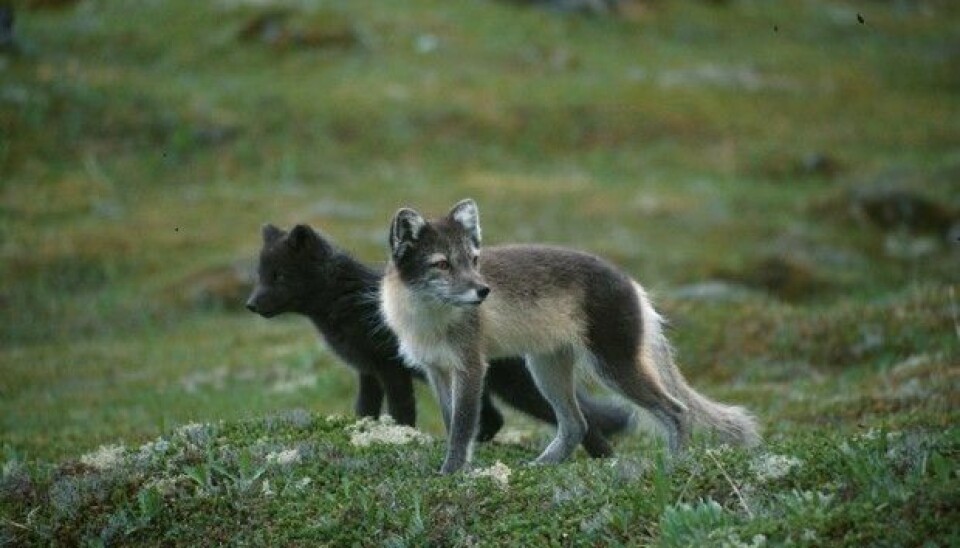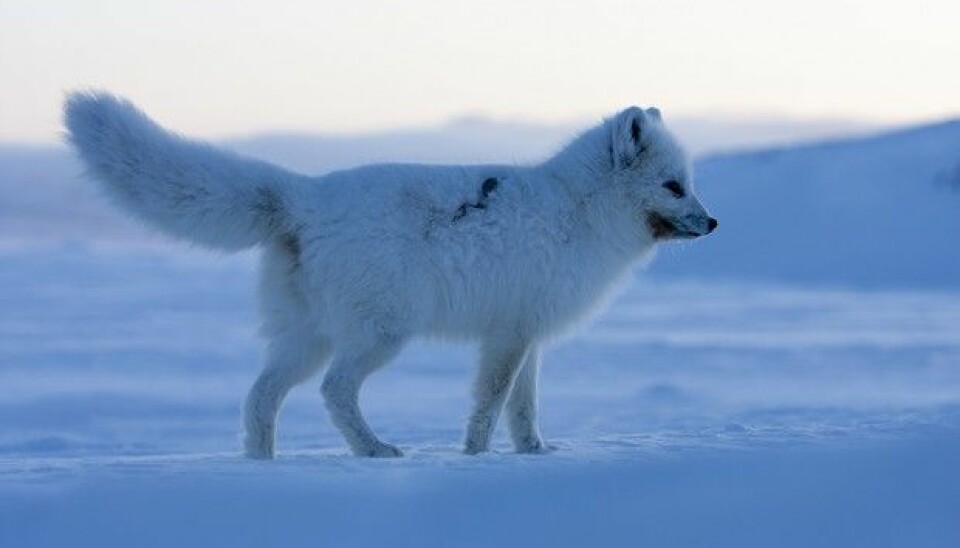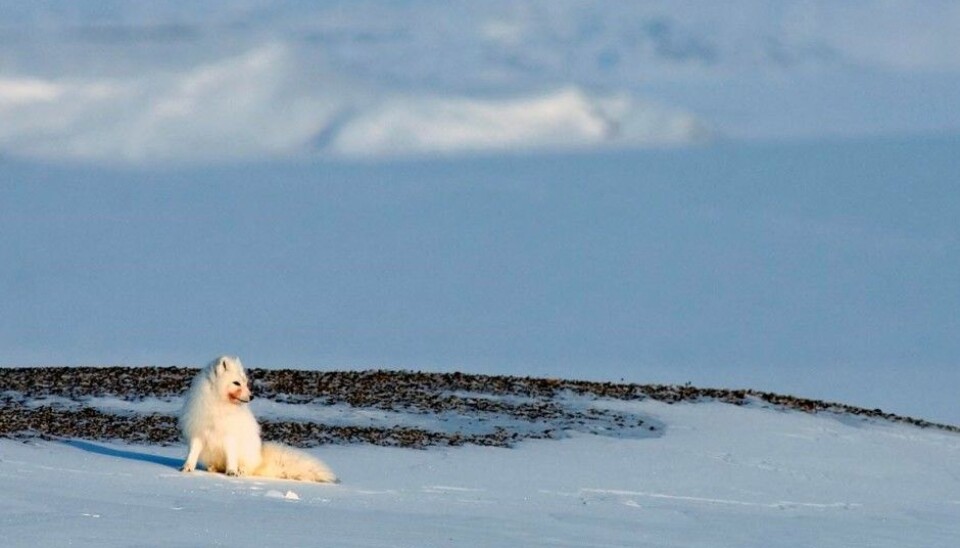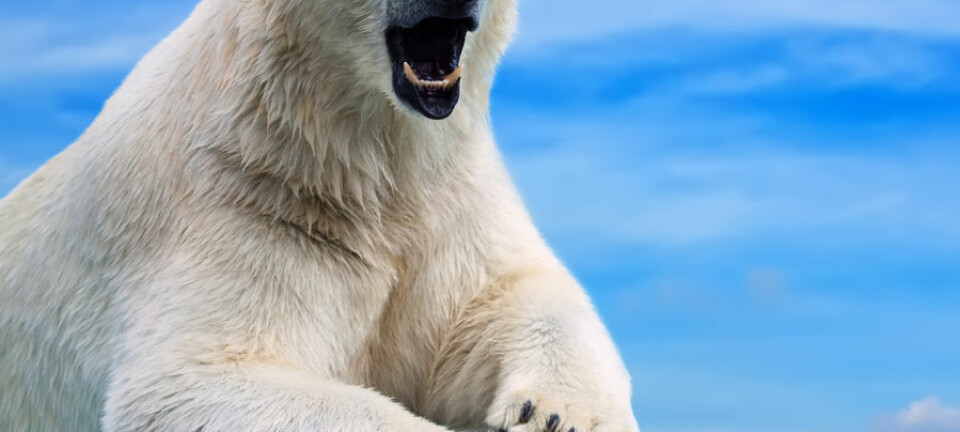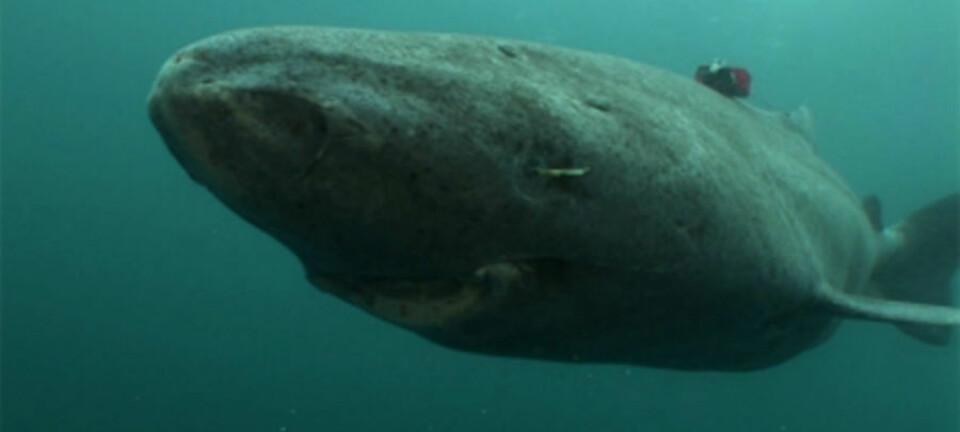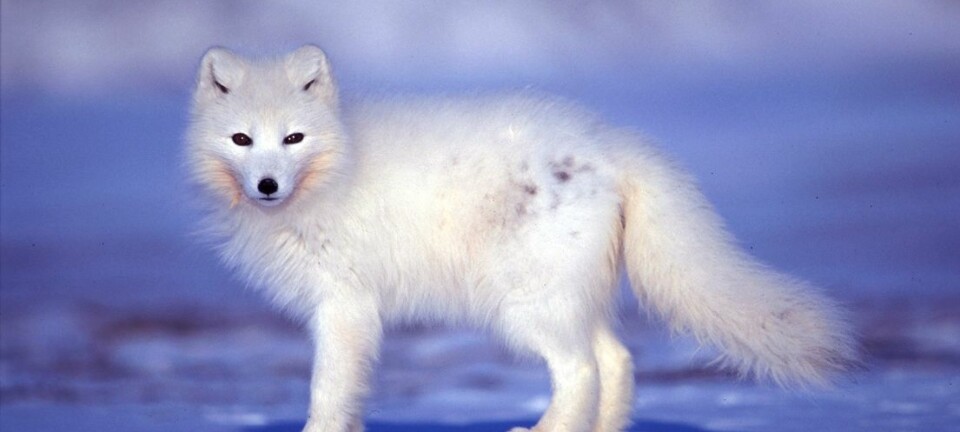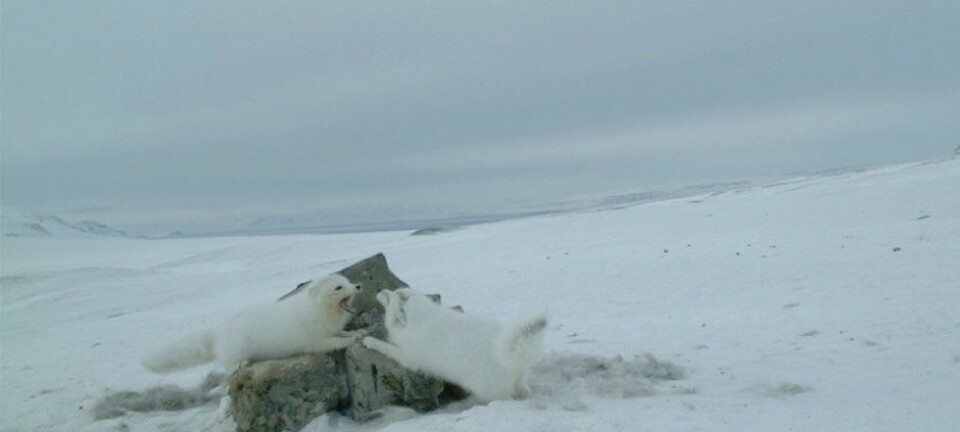Thin Arctic foxes suffer more from industrial pollutants
The Arctic may be a long way from the industrial world, but harmful chemical substances find their way northward and concentrate in animals there. Researchers have now found a disturbing trend: concentrations of one harmful chemical family are higher in thin Arctic foxes than in their more well-fed brethern.
Denne artikkelen er over ti år gammel og kan inneholde utdatert informasjon.
Although restricted in part by the Stockholm Convention on toxic pollutants in 2009, industrial pollutants called perfluoroalkyl substances (PFAS) are found in Arctic animals such as polar bears and kittiwakes.
Now researchers from the Norwegian Polar Institute have found a disturbing trend: the concentrations of PFASs in Arctic foxes (Vulpes lagopus) in the Norwegian Arctic archipelago of Svalbard are far higher if the animal is thin than if it is a well-fed, fatter fox. This is also the first time that PFASs have been found in Arctic foxes, the researchers said.
Chronic exposure to PFASs has been related to metabolic disruption, developmental toxicity, thyroid disruption, immunological effects, and neurotoxicity.
Uncertain consequences
“We do not currently have enough knowledge about how high levels of pollutants may affect fox populations,” says Eva Fuglei, a senior researcher from the Institute.
The Arctic fox is adapted to a high arctic climate and to living under extreme weather conditions on the tundra. It is very common for the fox to undergo seasonal fluctations in body weight from temperature variations, uneven access to food, migration and the stresses of reproduction, all of which can affect body fat amounts.
Fat reserves vital
Like many other arctic animals, the Arctic fox loses weight if it cannot find enough food and must rely on its fat reserves, which can total to 40 per cent of a well-fed animal’s total body weight. The problem is that the fat reserves are where contaminants are stored from the food the animals eat are.
The Arctic fox eats almost everything it comes across, including grouse, geese, birds' eggs and carcasses of reindeer, seabirds, pups and remains of seals taken by polar bears – all of which have varying amounts of persistant organic pollutants and other chemicals.
“When fat is burned, the fat-soluble pollutants are concentrated and released from the fat and transported via the blood to vital organs such as the liver and brain,” says NPI researcher Heli Routti, who was the corresponding author of an article published in the academic journal Environmental Science and Technology.
However, Routti and her fellow researchers also observed that PFASs, which are non-fat-soluble, were also found in high concentrations in the Arctic fox's body. Unlike other environmental pollutants, such as PCBs, which are fat-soluable, PFAS bind to proteins and are stored in protein-rich tissue. Researchers found the pollutant in the liver, blood, kidney as well as fat, with large differences in the amount of toxins between thin foxes and their fatter cousins.
“The total concentrations of two subsets of PFASs were five and seven times higher in fat tissue from thin foxes compared to fat foxes, and some of the individual concentrations in the liver, kidney and blood were twice as high in thin foxes compared to fat foxes,” said Routti.
Harmful and disruptive
PFAS compounds combined with fat-soluble pollutants can disrupt how fat is burned and stored in the body of animals. High concentrations of these pollutants in thin foxes, which due to their lower body weight are also in worse condition than well-fed foxes, worries researchers.
Knowing how these compounds affect the animals when their weights may fluctuate seasonally “is crucial in order to understand whether seasonal emaciation leads to increased concentrations of PFASs, which may further increase the toxic potential of the chemical cocktail to which the animals are exposed,” the researchers wrote.
“Changes in the metabolism and storage of fat reserves may have serious consequences for arctic animals that are entirely dependent on fat inventories,” Routti said.
----------------------------------------
Read the Norwegian version of this article at forskning.no







